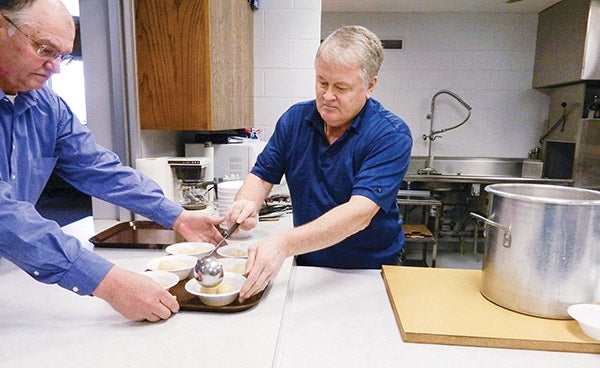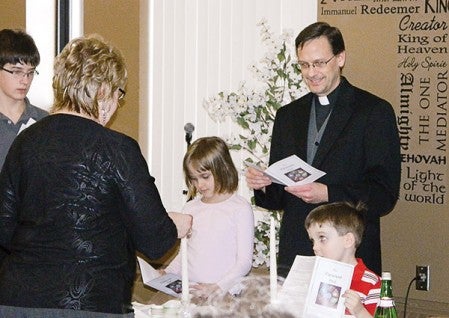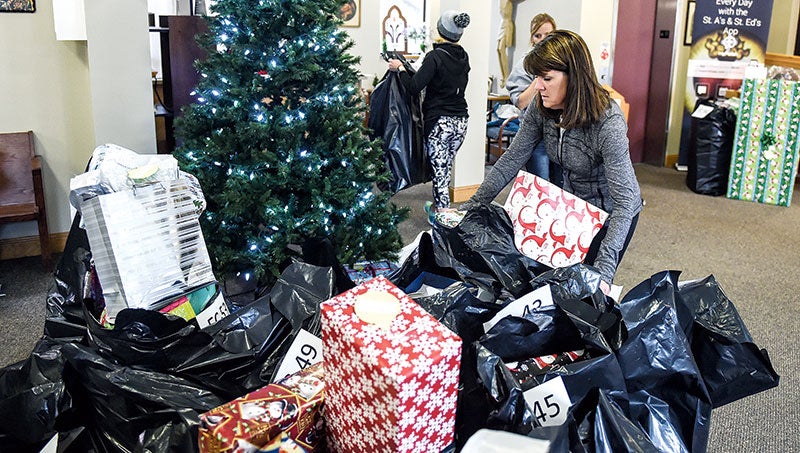Teaching Easter through food
Published 4:38 pm Saturday, March 30, 2013

Dave Grant, left, waits for Dave Watkins to top off his tray with unleavened bread for the seder meal.
Plenty of Christians are familiar with ham, green beans and potatoes on Easter Sunday, but not all of them are familiar with the seder meal on Maundy Thursday.
Those who attended St. John’s Lutheran Church’s seder meal on Thursday discovered some new foods and their historical and religious significance. St. John’s hosted the seder meal for the second time in three years and invited Holy Cross Lutheran to join.
“We had a lot of people at this one that had never been to a seder meal before,” said Meri Jo Lonergan, who cooked the meal. “And I think it was just the uniqueness of learning what all the items meant.”
Originally a Jewish tradition, the seder meal uses several foods to symbolize Passover: shankbone, roasted egg, unleavened bread, karpas, charoset, moror and saltwater.
During the meal, pastors Thomas Ogilvie of St. John’s and Brian Krueger of Holy Cross led prayers and descriptions about the significance of the meal.
For the shankbone, Lonergan simply used a lamb roast. It’s only the second time she cooked it, but with some previous advice, people say the meal turned out well. The meat symbolizes pesach, or paschal lamb, of which was sacrificed the night of the Lord’s Passover.
Karpas is a leafy green used to show the freshness of spring, in this case parsley. Attendees dipped the parsley in saltwater, which symbolized the tears of affliction shed under the conditions of bondage.
While Lonergan used boiled eggs instead of roasted eggs, a roasted egg can symbolize can offer Christian symbolism. The brown on the outside represents the daily temple sacrifices in Jerusalem, which were roasted with fire upon the altar. The egg was also dipped in saltwater.
Unleavened bread, as bland as it may sound, was mixed with a broth and served alongside everything else. The unleavened bread symbolized the dough carried out of Egypt, for which there was no time to bake.
The charoseth, is a sweet, maroon colored pineapple sauce, which represents bittersweet work that comes with the promise of God’s redemption. Along with that a bitter herb, moror, also symbolizes that same bitter work that came from the Hebrews’ enslavement in Egypt.
While the meal was spiritually enriching, it tasted good, too, Ogilvie and others said. Lonergan and Ogilvie wondered about people’s reception to lamb at the first seder meal they held two years ago, but they figured it out.
“How do we prepare the lamb in a way that people will enjoy it?” Ogilvie said. “Mary Jo did her magic and prepared some wonderful food for us.”
Ogilvie suspects the church will have the meal again in the future, as it is a way for both sister congregations to join for a good meal, Maundy Thursday service and a way to honor both the Old Testament and the New.



